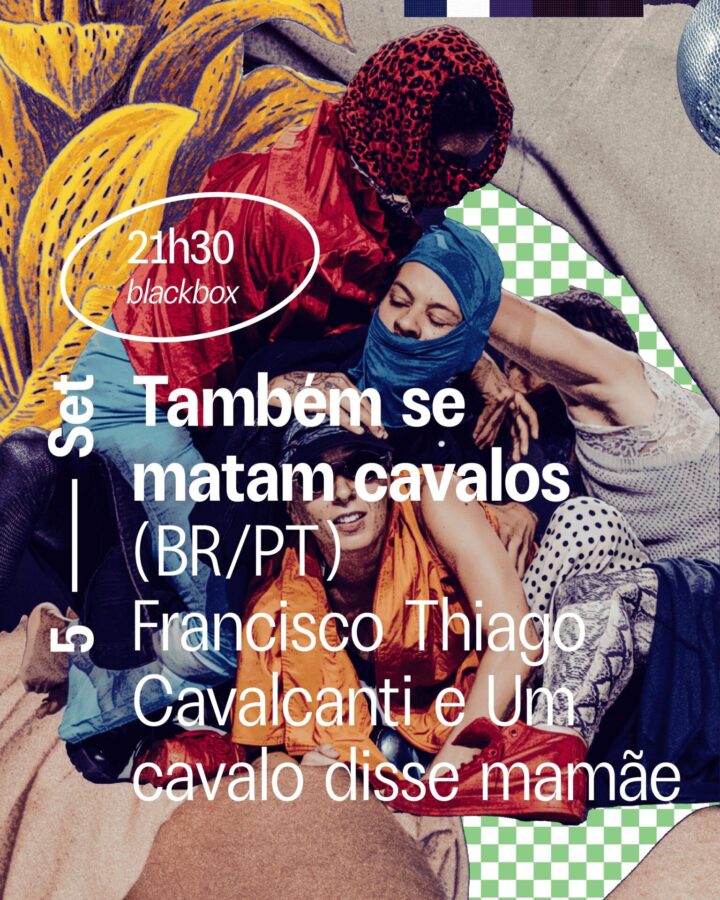TAMBÉM SE MATAM CAVALOS, Francisco Thiago Cavalcanti and Um cavalo disse mamãe
TAMBÉM SE MATAM CAVALOS
Francisco Thiago Cavalcanti and Um cavalo disse mamãe
5 September
70 minutes
9.30pm
Black Box, Central Elétrica
For nine decades in Brazil, there existed an asylum — the Hospital Colônia de Barbacena — where marginalized people, gay men, women, political enemies of the elite, unhoused alcoholics, unwanted children, wanderers, and epileptics were confined alongside those diagnosed with mental health conditions. All were subjected to the same brutal treatment, instituted by a system that didn’t want them. In this piece, Cavalcanti constructs an escape. What if four fugitives from that hospital are on the road, sharing a common pact?
What if they believe they are a rock band on tour? What if they are hiding in a garage or an abandoned building, rehearsing for a concert — but without instruments? Who are these people? What do they feel? How do they relate to one another?
Where is the line between madness and imagination? How can one keep thoughts and bodies as free as a child who is (still) unconditioned by society and productivity?
Artistic Info
Creation, performance, and direction: Francisco Thiago Cavalcanti
Co-creation and performance: Bárbara Cordeiro, Francisca Pinto, and Piero Ramella
Collaborators in creation: Clara Kutner, Lander Patrick, and Lisa Nelson
Artistic mentorship: João Fiadeiro, Carolina Campos, and Daniel Pizamiglio
Lighting and technical direction: Santiago Rodriguez Tricot
Co-production: Teatro do Bairro Alto
Photography: Clara Kutner, João Fiadeiro, Lucas Damiani, Safire Hikari
Acknowledgements
Lia Rodrigues, Marlene Monteiros de Freitas, Katarina Lanier, Jovan Monteiro, equipe do PACAP 5 e do Forum Dança
Support
Forum dança, L’Obrador-Espai de Creació, La caldera, Transborda-Mostra internacional de artes performativas de Almada, Teatro il Lavatoio, Linha de Fuga
Bio
Um cavalo disse mamãe is an independent, multidisciplinary, and cross-border collective that emerged in Portugal in 2022 from the meeting of Francisco Thiago Cavalcanti, Piero Ramella, Bárbara Cordeiro, and Francisca Pinto.
Within the context of the 5th Advanced Program in Performing Arts Creation (PACAP 5), promoted by Forum Dança and curated in that edition by choreographer and researcher João Fiadeiro, the four artists created the piece “Também se matam cavalos”, and since then have developed an ongoing research practice.
Their work explores, among other themes, the human and animal condition in a dialogical, poetic, and symbolic relationship.


